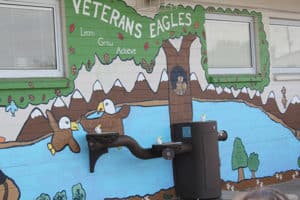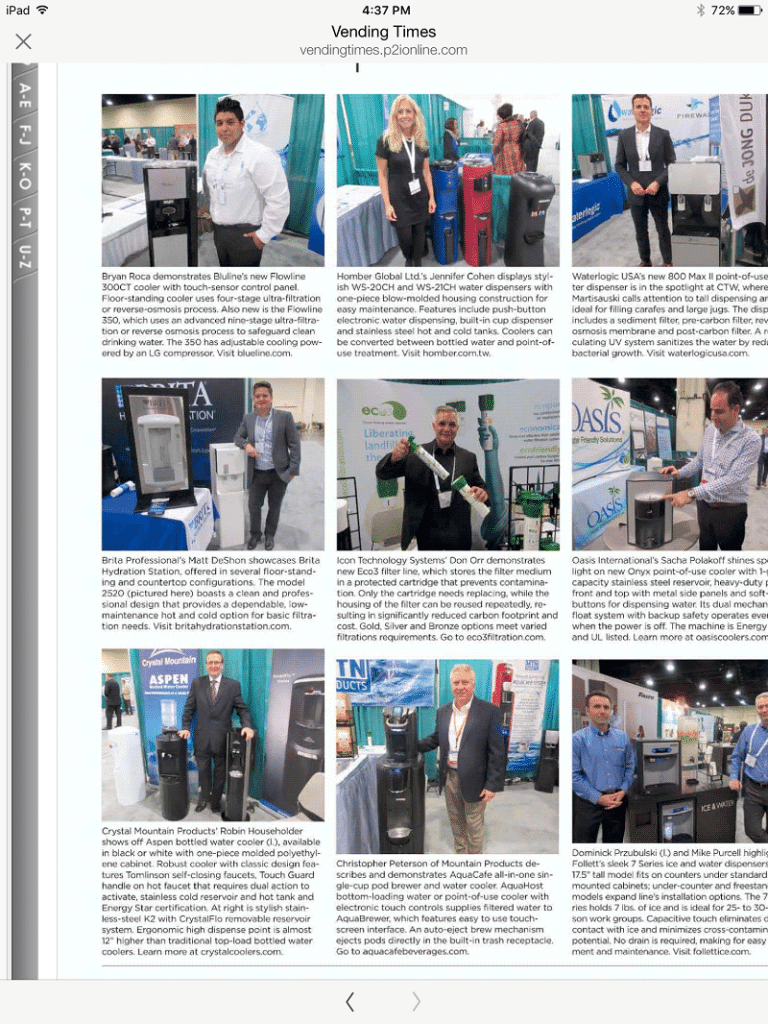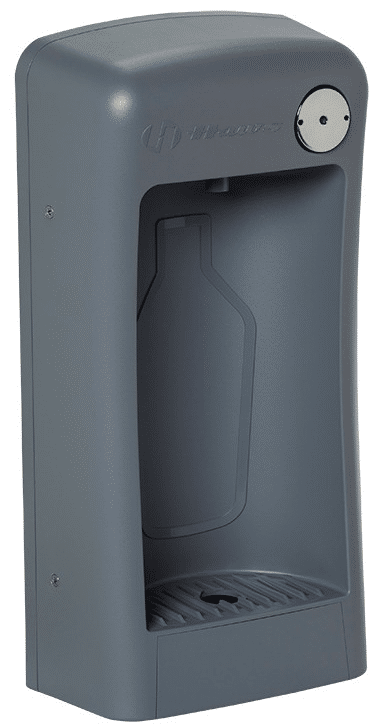Microplastics in Plastic Bottles
Less than a month into the New Year, researchers at Columbia University and Rutgers University issued findings on the distressing micro and nano-plastics found in plastic water bottles. The study revealed a staggering average of 240,000 microplastics in everyday liters of water. Researchers took five separate samples looking at three popular bottled water brands. Although the sampled brands remain anonymous, the microplastic levels ran between 110,000 and 400,000 per liter.
What does this mean for human health? Currently, research on the effects of micro and nano-plastics on human health is minimal. However, researchers do know some things to be true. Once certain microplastics leak into an environment, they will likely stay forever. The human gut accumulates much of the micro and nano-plastics ingested. Researchers attribute this to the minuscule size of specific plastic particles. Some variations present in bottled water are less than a micrometer (a millionth of a meter).
Recent studies have proven that the time and intensity of microplastic exposure impact the effects. Many studies consider drinking water the most pervasive issue of long-term exposure to plastic particles. These analyses found adverse effects on mouse models, saying “long-term inflammation of particles in liver tissues and chronic inflammation could lead to liver disease and chronic pulmonary disorders” (Gambino et al.).
Despite minimal research on the human effects, Duke University professor of medicine and comparative oncology director Jason Somarelli found more than 100 known cancer-causing chemicals in bottled water plastics in work yet to be published.
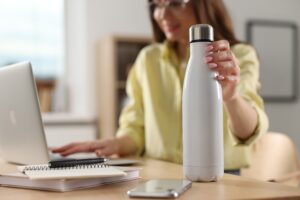
Reusable Water Bottles Have Become the New Norm
Not only can reusable water bottles reduce the time and intensity of microplastic exposure, but they also improve the global carbon footprint. A study conducted by Oceana estimates that only a 10% increase in market share for soft drink beverages sold in refillable bottles could reduce marine plastic pollution by 22%. This reduction would help prevent tap water microplastic contamination, ultimately mitigating climate change.
Individuals can also make a tangible impact by substituting plastic water bottles with refillable ones. According to a report published by Plastic Oceans, plastic bottles make up 14% of littered waste. When one person switches to a reusable bottle, they would have prevented approximately 170 plastic bottles from being improperly discarded in just one year.
The cost effectiveness of reusable water bottles is often overlooked. A paper produced by The Earth Policy Institute explains that bottled water costs more than gasoline at $10 per gallon. Comparatively, the average cost of tap water is about $0.002 per gallon. For manufacturers, this means lower production costs.
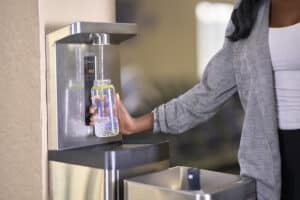 Filtered Bottle Filling Stations Facilitate Good Environmental and Human Health
Filtered Bottle Filling Stations Facilitate Good Environmental and Human Health
A popular alternative on the rise are filtered bottle-filling stations like the Hydration Station Bottle Filler and Drinking Fountain. These stations compliment reusable water bottle use by encouraging people to refill their water throughout the day.
While the initial installment of hydration stations may seem costly, they have a lifespan of up to 12 years, provided they are cost-efficient and eco-friendly. Research at the University of Chicago examined an average of 177,480 plastic water bottles saved across 102 bottle-filling stations over two weeks (Piccirillo-Stosser 25). Over a nine-month school year, this constitutes around 3,470,177 plastic water bottles.
Alongside cost efficiency and environmental mitigation, bottle fillers and drinking fountains improve general health. Unlike reusable bottles alone and plastic water bottles, filtered bottle filling stations guarantee fresh, filtered water. Some benefits of drinking filtered water include increased hydration, better taste and smell, decreased risk of certain cancers, and a strengthened immune system.
Seeking Sustainable Bottle Fillers
The findings of microplastics in plastic water bottles emphasize the importance of mindfulness when it comes to hydration. While transitioning to reusable water bottles protects individual and environmental health, the communal impact of bottle fillers and fountains amplifies the efficacy of health-driven initiatives.
Click here to learn more about the Hydration Station Bottle Filler and Drinking Fountain. Choose wisely for a healthier and greener tomorrow.
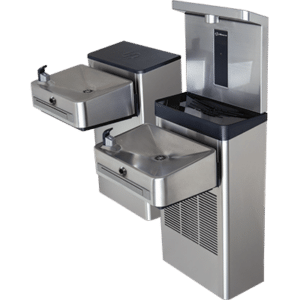
Custom eagle and tree nest drinking fountain and a mural designed by students were unveiled June 5 at Veterans Elementary School – STEM Academy.
Together with Veteran’s Elementary School (Reno, Nevada) and other local manufacturers, Haws Corporation’s Research & Development team created and implemented a custom drinking fountain project for 1st and 5th-grade students for the 2016-2017 school year. After working with the STEM Academy faculty and students for several years, Michael Joyer – Haws R&D Manager, developed a new project idea that would allow the students to fully engage with an Engineering project to help make the connection between the creative and technical side of science, technology, engineering, and art. A drinking fountain was a natural choice for Michael Joyer and Mindy Haffke, Haws R&D Engineer, given Haws’ 110 years heritage as the original drinking faucet inventor with Berkeley School District. “From the beginning, this project was something our students held dear,” said Ron Jones, a fifth-grade teacher at the school who worked directly with the engineers. “They took great joy in considering their ideas, collaborating with their classmates, and creating something that will be on our campus for many years to come.”
Throughout the process of creating the fountain, the Haws team met with the students and helped guide their project by melding individual student design concepts together to create a bird’s nest drinking fountain with nests for the water bowls, eagle head bubblers, and a mister – a tribute to the STEM Academy’s Eagle mascot. The process involved 3D models, castings, and design changes with students participating monthly in order to realize a final creation. B&J Inc. donated the material and metal fabrication services to bring the student’s unique design to life and additional support services were donated by NeoMek and Zevado Corporation. In addition, students created a mural under the direction of art teacher Elizabeth Brooks and resource teacher Alita Lutrick. “It was a fun project to help the kids design their own fountain,” said Mike Joyer, R&D Manager of Haws. “We really enjoyed teaching them the engineering process from start to finish, and we hope this project inspires all of them to consider engineering careers when they grow up.”
To learn more about Haws specials please visit Haws Specials.
Host Property Achieves LEED Silver CertificationOriginal post: Host Hotels & Resorts
12/07/2016
The U.S. Green Building Council awarded The Axiom® Hotel LEED® Silver certification for its green initiatives. LEED (Leadership in Energy and Environmental Design) is a green building certification program that recognizes performance in key areas of environmental and human health such as site development, water savings, energy efficiency, materials selection and indoor environmental quality.
The Axiom Hotel was designed by Host Hotels & Resorts® to achieve LEED certification. Guestrooms feature dual-flush toilets to reduce water usage and Smart TVs with information guides and dining menus to limit paper waste. The Axiom also participates with PressReader to provide paperless newspapers and magazines for guests. Filtered ice and water stations are located on every floor and recycling bins are available throughout the hotel. Other green initiatives include a high efficiency HVAC system with integrated energy management that monitors occupancy to control temperatures, power-saving fiber optic cabling, energy efficient LED lighting and instant hot water heaters.
Learn more about Axiom Hotel’s sustainability efforts and LEED Silver certification and Host’s Corporate Responsibility program.
Healthy Eating Research Program of the Robert Wood Johnson Foundation funds water access study
In collaboration with the Nutrition Policy Institute (NPI), University of California Division of Agriculture and Natural Resources, America’s ToothFairy: National Children’s Oral Health Foundation is activating youth participants in its #MySmileMattersSM Youth Movement to aid in an innovative study to assess the state of drinking water in schools.
Funded by the Healthy Eating Research Program of the Robert Wood Johnson Foundation, the purpose of the study, Technical vs. Effective Access toWater: A Photo-Evidence Technique to Assess Drinking Water in Schools, is to investigate access to drinking water in schools and develop preliminary recommendations for effective access. The study will measure both “technical” access, the presence of some type of water source, as well as “effective” access, which includes such considerations as the condition, appearance and accessibility of the water source, water flow, water promotion and availability of cups. Drinking water researchers agree that few students will drink from old, poorly maintained drinking fountains and, when they do, they only take a few sips of water. However, studies show that effective access can significantly increase students’ water intake.
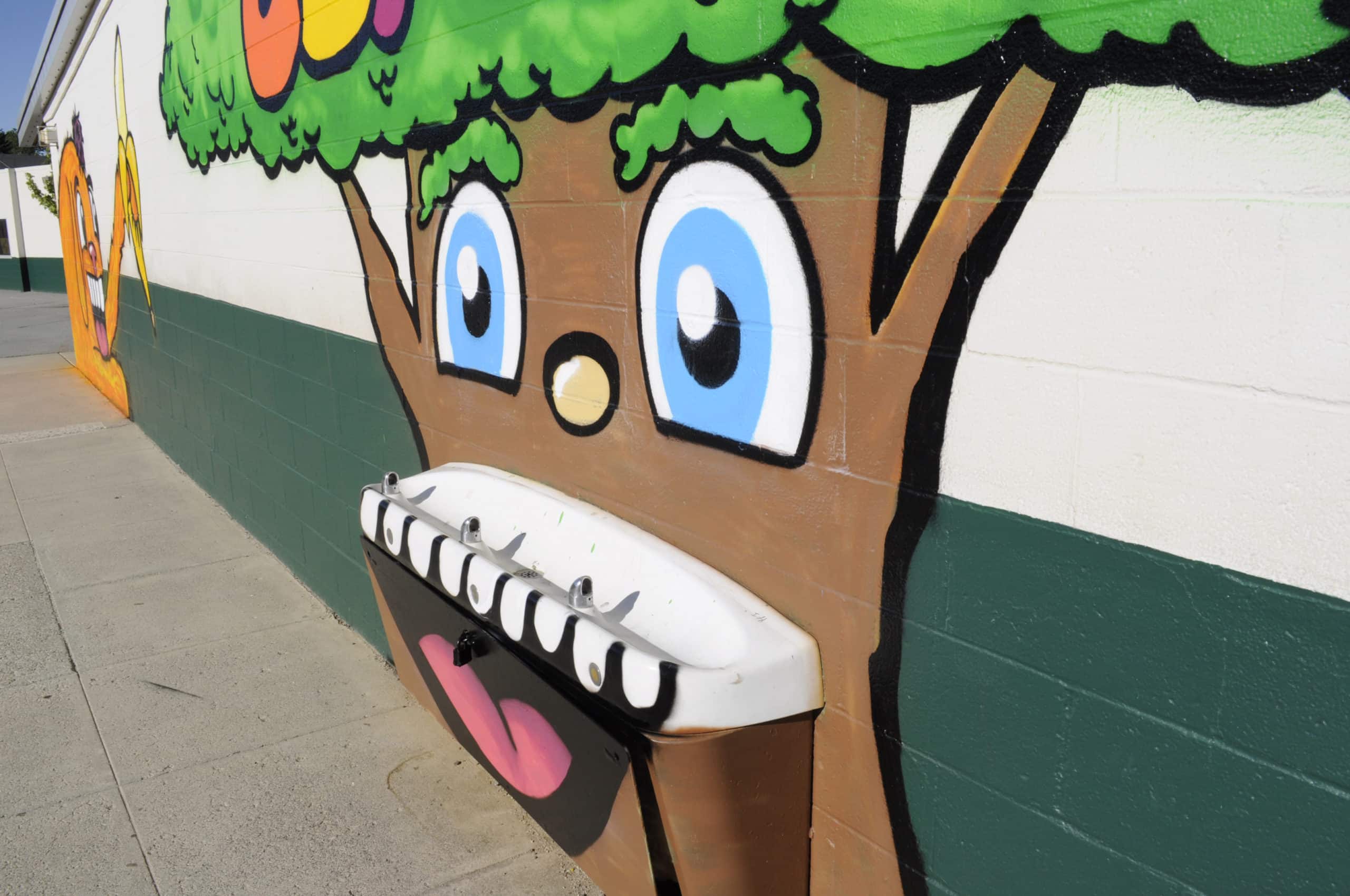
Effective access to safe drinking water gives youth a healthy, zero-calorie alternative to sugar-sweetened beverages (SSBs), the greatest contributor of sugar in children’s diets and among the top sources of calories for US children, according to The Centers for Disease Control and Prevention. If substituted for sugar-sweetened beverages, water consumption is also associated with reduced levels of tooth decay, one of the most prevalent chronic illnesses among children in the U.S.
For this study, 16 high school chapters of HOSA: Future Health Professionals will be chosen to collect photographic evidence of water access in schools. Their findings will provide insight into solutions to the challenge of ensuring all youth have access to drinking water during the school day.
“America’s ToothFairy strongly supports efforts to increase access to safe drinking water for children in school and other childcare settings,” said Fern Ingber, America’s ToothFairy President and CEO. “We are proud to engage our #MySmileMatters Youth Movement in this important effort to ensure all children have access to drinking water.”
About America’s ToothFairy: National Children’s Oral Health Foundation
America’s ToothFairy: National Children’s Oral Health Foundation is dedicated to raising awareness of one of the most prevalent chronic childhood illnesses: pediatric dental disease, facilitating the delivery of comprehensive oral health services and improving quality of life for underserved children. Through the #MySmileMatters Youth Movement, collaborative partnerships with a diverse array of national service organizations, growing network of non-profit clinical partners, dedicated professional and student volunteers, and suite of high-impact community education and service programs, America’s ToothFairy is building a powerful, united effort to eliminate tooth decay and protect the smiles of our most vulnerable children. For more information, visit www.AmericasToothFairy.org.
[via: America’s ToothFairy: National Children’s Oral Health Foundation]
Staying Hydrated In the Warm WeatherSTAYING HYDRATED IN THE WARM WEATHER
With the warm weather approaching, it is imperative to stay hydrated. The dog days of summer have hit with temps 100 degrees and higher! Not only is this unpleasant, it can be dangerous. Our body’s fluid requirement increases as the temperature rises and being dehydrated can have serious effects on your health. Check out my tips on how to keep yourself hydrated and learn which foods/beverages hydrate you.
Functions of fluid in the body
Our body is made up of 55 – 60% water. Water is essential for life and plays vital roles in the body, including regulation of metabolism and body temperature. Every day we lose water about 2 1/2 liters of water through breathing, perspiration, urine and bowel movements. And when you are outside in the heat, you lose even more. For our bodies to function properly, we need to replenish these fluid losses by consuming beverages and foods that contain water.
Who is at risk for dehydration?
Everyone who goes outside in the heat is at risk for dehydration, but those people who work or exercise outdoors, children, the elderly and anyone who has a pre-existing conditions—such as respiratory or cardiovascular related conditions, or diabetes has a greater risk.
Symptoms of dehydration
Symptoms of dehydration range from mild to life threatening. How many times have you had a headache, a dry mouth, felt weak or haven’t urinated in hours? It’s possible that you were dehydrated. Other symptoms include constipation, dry eyes, muscle cramps, decreased sweating, and nausea. While not a symptom, dehydration can increase risk of kidney stones. More serious symptoms include mental confusion, vomiting, racing pulse, difficulty breathing, seizures, etc. At this point, medical attention is needed immediately.
How much fluid do you need a day?
The recommendation used to be that we consume 64 oz of water a day. However newer research led to updated recommendations by the Institute of Medicine:
– adequate intake for men is ~ 3 liters (about 13 cups) of total beverages a day
– adequate intake for women is ~ 2.2 liters (about 9 cups) of total beverages a day.
It has also been shown that we can meet up to 25% of our fluid needs from watery foods, such as tomatoes, lettuce, watermelon and oranges. (check out this chart for more info – remember to divide by 28 to convert grams to ounces!)
*Keep in mind that your fluid needs will be higher if you work or exercise in the heat!
Tips to increase your fluid intake in the hot weather
1. Eat watery fruits and veggies to get nutrition and fluid.
- Don’t wait until you are thirsty. By the time thirst sets in, you are already dehydrated.
- If you know you’ll be doing errands or in the car for extended periods of time, freeze bottles of water and take them with you. Drinking warm water when it is 90 degrees outside is not pleasurable! (nor is drinking hot Gatorade on a 60 mile bike ride!)
- At work, set concrete goals with regards to fluid intake, otherwise you may get caught up in what you are doing and forget to drink. For example, tell yourself that you need to finish at least 3 16 oz bottles of water by the end of the day.
- Drink 8 oz of water before you leave the house in the morning. Drink 8 oz with both lunch and dinner. Now you’ve consumed 24 ounces!
- While water is always best, other beverages such as tea and coffee (both iced and regular), juice, sports drinks and milk count as fluid. In the past it was said that caffeinated beverages dehydrated you. We now know that they can provide your body with fluid – if you are used to drinking them. My disclaimers:
*While I strongly discourage drinking soda, both regular or diet (for many reasons!), it does contain fluid and therefore will hydrate you. But try to get more of your fluid intake from water …
* But keep in mind that sports drinks and juices tend to contain large amounts of sugar – not a good thing for most of us …
* While caffeinated beverages can provide fluid, I don’t recommend consuming large amounts of caffeine (and some people shouldn’t consume any). See my previous post on caffeine …
- If you don’t love plain water, try adding a squeeze of lemon or lime to flavor it. Or drink flavored seltzer.
- If you are exercising for 60 minutes+ (especially if it is in the heat), drink a sports drink that contains electrolytes and carbohydrates. Otherwise, plain water is fine. If you are working in the heat and sweating profusely, you may want to drink a low calorie sports drink such as G2 to get the electrolytes but with less sugar.
- A good way to test your hydration status is to check the color of your urine. Clear or light-colored urine means you’re well hydrated, whereas a dark yellow or amber color usually signals dehydration. Keep in mind that taking B vitamins can cause your urine to appear more yellow!
- It is highly unlikely that the average person will drink too much water. The exception may be with endurance athletes who drink large amounts of water when exercising for long periods of time. This can cause a potentially dangerous condition called hyponatremia (low sodium levels in the blood). This can be prevented by drinking a sports beverage that contains electrolytes (including sodium)
- Lastly – sorry but alcohol doesn’t count as fluid (to all my friends who get out the lemonade and vodka as soon as the temps rise … you know who you are!) Alcohol does the opposite and causes dehydration.
Be safe and drink up!
Written by Steve Rapoport of Fresh2o
Brita Hopes to Make Big Splash With Stephen CurryREPOST from Creativity.
Brita is eager to find out whether an NBA star’s endorsement can do for water filters what it has done over the years for everything from soft drinks and sports drinks to apparel and restaurants.
The brand has debuted a new 30-second spot featuring the athlete. In it, Mr. Curry is surrounded by water as he takes shots on a CGI-infused basketball court and talks about water. Another one of his endorsements can be spotted in the Brita commercial, as he dribbles an Under Armour basketball, and wears that brand’s clothing. “You are what you drink,” he says near the end of the commercial, after taking a sip of water from a glass with the Brita logo on it.
The Clorox brand surprised some basketball fans when it announced that Golden State Warriors star Stephen Curry would promote its water filters, and the idea of drinking more water in general, rather than teaming up with a larger beverage brand.
“He’s really a great role model for that millennial consumer, and that’s a direction that we want to make sure Brita is moving against effectively,” said Jon Schlesinger, Brita’s VP-marketing.
This week, Mr. Curry appeared at an Oakland, Calif., school to speak with students about the benefits of drinking water. Brita also announced a contest for people to come up with ideas for commercials about water, with the winning spot, set to air later this year, featuring Mr. Curry.
The moves come as Brita tries to grow usage of its filters, especially among the younger crowd that Mr. Curry appeals to.
Learn more about the Brita Hydration Station.
Facts & Solutions: Lead in Drinking WaterAs recently reported in multiple media outlets, high levels of lead are tainting water systems across our country. Here are some data points and facts we have collected to help summarize the issues and challenges facilities and homes are facing:
- The EPA’s national testing “action level” for lead in water is 15 parts per billion.
- A national EPA analysis conducted between 2012 and 2015 showed 350 schools and day-care centers failed lead tests a total of 470 times. [1]
- Flint Water Study sampled 252 homes in Flint, Michigan and results showed that 40% of samples were over 5 parts per billion (ppb). Flint’s 90th’ile lead value is 25 ppb in that survey. [2]
- Newark, NJ collected 2,067 samples from school buildings between 2012 and 2015 with 12% above the EPA “action level.” With results ranging from 16 to 558 ppb.[3]
- The EPA estimates that about 90,000 public schools and half a million child-care facilities are not regulated under the Safe Drinking Water Act because they depend on water sources such as municipal utilities who are expected to test their own water.[4]

- EPA recommends anyone concerned with lead should only consume filtered or bottled water (washing hands and bathing with unfiltered water is ok). Filtered water is a safe option only if the filter is certified to remove lead and it is replaced regularly. [5]
- EPA recommends using an NSF-certified water filter to remove lead. [6]
With many factors influencing water safety levels, we wanted to highlight some of the safety features of our bottle fillers and their certifications for those looking for solutions.
- Brita® Hydration Stations® are certified to NSF International 53 to remove 99% percent of lead and 99.9% of cysts from tap water that has a lead concentration of 150 parts per billion. [7]
- Point-of-Use bottleless units are designed for smaller amounts of drinking water and offer a 1,500-gallon capacity certified Brita® professional filter.
- Wall unit bottle fillers are designed for larger consumption rates and offer a 2,500 gallon capacity certified Brita® professional filter.
[1] http://www.usatoday.com/story/news/nation/2016/03/17/drinking-water-lead-schools-day-cares/81220916/
[2] http://flintwaterstudy.org/2015/09/our-sampling-of-252-homes-demonstrates-a-high-lead-in-water-risk-flint-should-be-failing-to-meet-the-epa-lead-and-copper-rule/
[3] http://www.nj.com/essex/index.ssf/2016/03/lead_in_newark_schools_water_dates_back_to_at_leas.html
[4] http://www.usatoday.com/story/news/nation/2016/03/17/drinking-water-lead-schools-day-cares/81220916/
[5] https://www.epa.gov/flint
[6] https://www.epa.gov/flint
[7] http://www.abc12.com/home/headlines/People-voice-their-concerns-about-Brita-filters–330995452.html?device=phone&c=y
Brita Hydration Station Recognized at NAMA One Show The Brita® Hydration Station® booth at the NAMA One Show in November received some recognition in the February issue of Vending Times Magazine.
“Brita Professional’s Matt DeShon showcases Brita Hydration Station, offered in several floor-standing and countertop configurations. The model 2520 (pictured here) boasts a clean and professional design that provides a dependable, low-maintenance hot and cold option for basic filtration needs. Visit britahydrationstation.com.”
Visit BritaHydrationStation.com to learn more about the Brita® product family and how you can provide Brita® filtered water to your office, school, or facility.
For a limited time, use code “TOUCH-FREE” for $150 off wall mount bottle fillers.
10 Good Reason to Drink More Water

From the stuff we drink and swim in, to the steam that eases congestion and the ice that reduces swelling, water is all around us (and even in us). Heck, it kind of is us. “Water makes up about two thirds of who we are, and influences 100 percent of the processes in our body,” says CamelBak hydration expert Doug Casa, PhD. That probably explains why we feel better when we’re drinking enough of it. To learn exactly how water is helping us, as well as some creative ways to use it, check out these 10 reasons why you should go hydrate right now.
1. It could aid weight loss.
Anyone looking to lose weight could be helped by upping their water intake. Studies have found that when participants drink water before a meal, they lose weight faster than those who did not drink water. Extra H2O helps us eat less by making us feel full, and it may also boost metabolism. CamelBak hydration advisor Kate Geagan, RD says it’s not uncommon to put on weight by mistaking thirst for hunger, and she offers this pro tip: Next time you feel fatigued or sluggish, “drinking water may be just what [you] need to perk up.”
2. It powers our warm-weather exercise.
With the proper precautions, working out in the heat is usually fine—and staying hydrated is one of the most important things you can do. The hotter the workout, the sweatier we tend to get, so it’s extra important to replace those lost fluids. Determining sweat rate informs good rehydration strategy: “Once an athlete [knows his or her] sweat rate, they can begin to practice replacing these fluid losses in training and be optimally prepared for [athletic exertion],” says Casa.
3. It keeps things moving, digestion-wise.
Water helps us, you know, go by helping dissolve fats and soluble fiber. Drinking enough water prevents constipation and also reduces the burden on the kidneys and liver by helping to flush waste products. Geagan breaks it down: “In the large intestine, water binds with fiber to increase the bulk of the stools, reduce transit time and make elimination easier. When you don’t drink enough water and fluids, the colon pulls water from stools, increasing your risk of constipation.”
4. It helps endurance athletes fight fatigue.
Water is an integral part of most any workout, and it becomes especially important in order to prevent dehydration during long workouts. When exercising for an hour or more, drinking water treated with carbohydrates and salts (by mixing in tablets such as Nuun, or making a DIY version) can help maintain fluid balance, which aids athletic performance and helps prevent post-exercise fatigue and exhaustion.
5. It might protect against some types of cancer.
Research has found that the greater the fluid intake, the lower the incidence of bladder cancer, with more significant results when the fluid is water. One possible reason could be that urinating more frequently prevents the buildup of bladder carcinogens. Staying hydrated may also reduce the risk of colon cancer and breast cancer.
6. It can improve mood.
Drinking water makes us feel so refreshed that it actually improves our state of mind. You don’t even have to be severely in need of it to benefit: Even mild dehydration has been shown to negatively impact moods.
7. Fun, frozen workouts are great for you.
When it’s too snowy or icy to go for a run, or you want a workout that’s as fun as it is good for you, find yourself some frozen water. Try ice skating for a low-impact workout that challenges your balance, get in some hill-work while sledding, get a full-body workout while cross-country skiing, or improve your cardiovascular endurance with snow-shoeing.
8. Drinking it may help prevent headaches, naturally.
Going without water for too long causes headaches for some people, and has been identified as a migraine trigger . The good news is that in a study on the effects of water on headaches, participants experienced “total relief” from their headaches within 30 minutes of drinking water (two cups, on average) . Geagan says a good way to prevent headaches is to stay hydrated throughout the day. And if you’ve already been hit with a dehydration-triggered headache, you’ll need significantly more water to help it go away. She recommends drinking two to four cups of water for headache relief within one to two hours.
9. It keeps our kidneys working.
Kidneys remove waste from our bodies, help control our blood pressure, and balance fluids, so they’re crucial to keeping our systems running smoothly. One surefire way to keep them working properly? Adequate water consumption! So drink up to keep those kidneys in tip-top shape.
10. It energizes us.
Next time you’re feeling zonked, try drinking a couple glasses of water. Feeling tired is one of the first signs of dehydration and filling back up on H2O could zap the sleepiness.
[via LinkedIn Steve Rapoport]
Article Re-post: Are Your Children Dehydrated At School?BRITA reveals the statistics of children’s drinking habits at school and that parents don’t know how much their children drink at school.
A new study by BRITA – Europe surveyed 2,000 parents of primary school children. The results show that almost three quarters of parents don’t know how much water their children drink whilst at school. 66% of parents admitted to not knowing the recommended daily intake of fluid for children.
- 92% of parents believe hydration is important for their children and it helps to boost concentration levels during lessons.
- Parents have more control over their children’s drinking habits during the weekends and holidays and 63% of parents say they encourage their child to drink plenty of water when they are at home.
- 77% of parents across the nation said that the main challenge they face with their children is combating their forgetfulness when it comes to drinking the recommended amount of water.
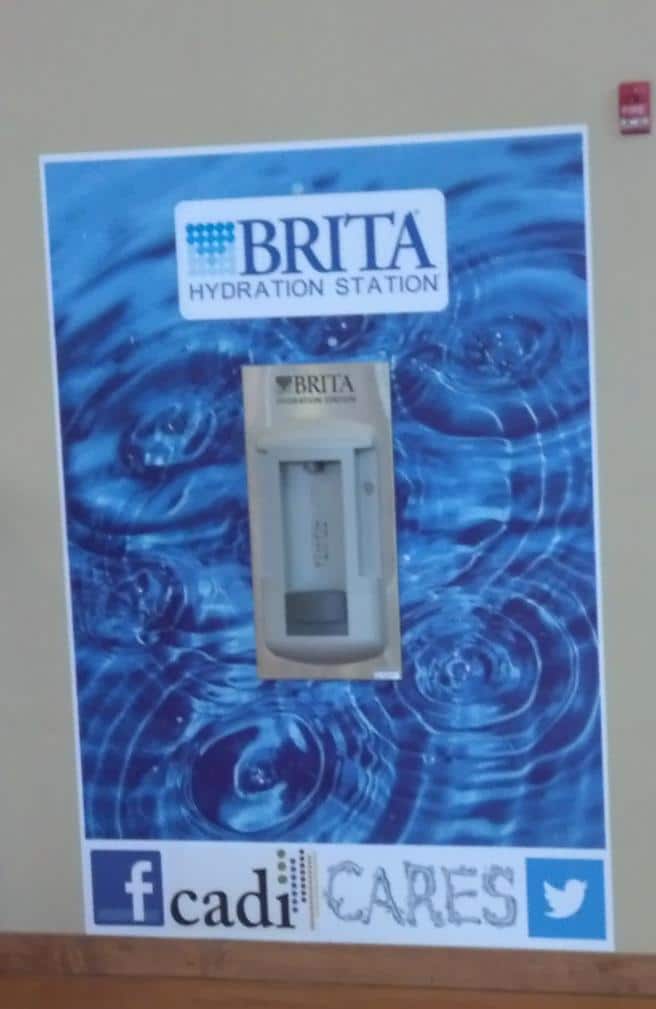 Renowned London dietician and nutritionist, Jo Travers commented “Children are less likely to recognize the early stages of thirst, which adults are more aware of, meaning they can forget that drinking water regularly is important. When children return to school, after being under their parent’s guidance during the holidays, they can quickly get out of the habit of drinking regularly if they aren’t being reminded.”
Renowned London dietician and nutritionist, Jo Travers commented “Children are less likely to recognize the early stages of thirst, which adults are more aware of, meaning they can forget that drinking water regularly is important. When children return to school, after being under their parent’s guidance during the holidays, they can quickly get out of the habit of drinking regularly if they aren’t being reminded.”
Parents notice when their child is dehydrated when returning from school, over half of the respondents said their children are irritable and 59% of parents said their child was tired.
Jo Travers adds “Children require higher quantities of water in relation to their body weight than adults. When hydrated, children have greater cognitive function, better visual attention, improved accuracy in motor skills such as handwriting, and more concentration which helps them to perform better. Therefore it is important that parents have access to the right information and support to help them keep their children hydrated throughout the school day.”
Read the full article here: Female First – Are your children dehydrated?
Looking for a low-cost bottle filler? Looking for a low-cost, easy-to-install bottle filler to provide drinking water? Sick of trying to fill up your bottle in the drinking fountain? Look no further!
Looking for a low-cost, easy-to-install bottle filler to provide drinking water? Sick of trying to fill up your bottle in the drinking fountain? Look no further!
The Haws Bottle Filler, model 1900, features a patent pending reversible drain, enabling the unit to be installed above most existing drinking fountains or electric water coolers or be mounted as a stand-alone fixture.
KEY FEATURES:
• Patented push-button operation
• No electrical required
• 100% lead-free waterways
• Patent-pending reversible drain can be turned inward for in-wall waste hook- up
• Separate mounting frame allows for quick and easy installation
• ADA compliant
• Universal fit
Click here to request a quote or to buy now!
FRONT DRAIN REAR DRAIN
Editorial: We don’t trust drinking fountains anymore, and that’s bad for our health
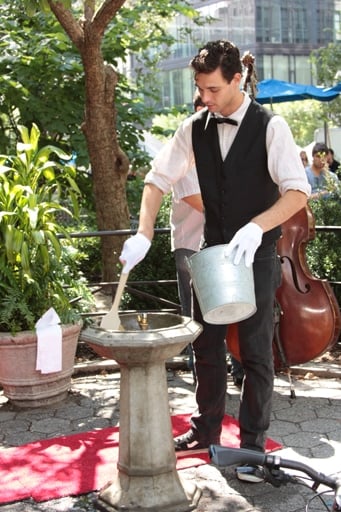 The invention of the modern drinking fountain in 1906 by Luther Haws was a significant innovation that improved public spaces dramatically by helping to deliver sanitary drinking water to anyone. Today, the number of public drinking fountains is decreasing, and it is leading to problems. This past month, the Washington Post published an article that explains why this is happening, and why it’s not good. Below is an introduction to the article, which can be read in full here at the Washington Post.
The invention of the modern drinking fountain in 1906 by Luther Haws was a significant innovation that improved public spaces dramatically by helping to deliver sanitary drinking water to anyone. Today, the number of public drinking fountains is decreasing, and it is leading to problems. This past month, the Washington Post published an article that explains why this is happening, and why it’s not good. Below is an introduction to the article, which can be read in full here at the Washington Post.
“The event, called ‘Respect the Fountain,’ was staged by a group with an unlikely mission — to make water fountains cool again.
Fountains were once a revered feature of urban life, a celebration of the tremendous technological and political capital it takes to provide clean drinking water to a community.
Today, they’re in crisis. Though no one tracks the number of public fountains nationally, researchers say they’re fading from America’s parks, schools and stadiums. ‘Water fountains have been disappearing from public spaces throughout the country over the last few decades,’ lamented Nancy Stoner, an administrator in the Environmental Protection Agency’s water office. Water scholar Peter Gleick writes that they’ve become ‘an anachronism, or even a liability.’ Jim Salzman, author of Drinking Water: A History, says ‘they’re going the way of pay phones.’
Even the International Plumbing Code, followed by builders in most American cities, has signaled that the fountain is out of style. In the 2015 edition of the manual, which lays out recommendations on matters such as the number of bathrooms an office should have and how pipes should work, authors slashed the number of required fountains for each building by half.
This loss isn’t a result of some major technological disruption. While U.S. consumption of bottled water quadrupled between 1993 and 2012 (reaching 9.67 billion gallons annually), that’s more a symptom than a cause. What’s changed in the past two decades is our attitude toward public space, government and water itself. ‘Most people over the age of 40 have really positive stories of drinking fountains as kids,’ says Scott Francisco, who helped organize the Union Square event with Pilot Projects, an urban design company. ‘The sense today, though, is that they’re dangerous, they’re not maintained and they’re dirty.’
In short, we don’t trust public fountains anymore. And it’s making us poorer, less healthy and less green.”
To read more visit the Washington Post

